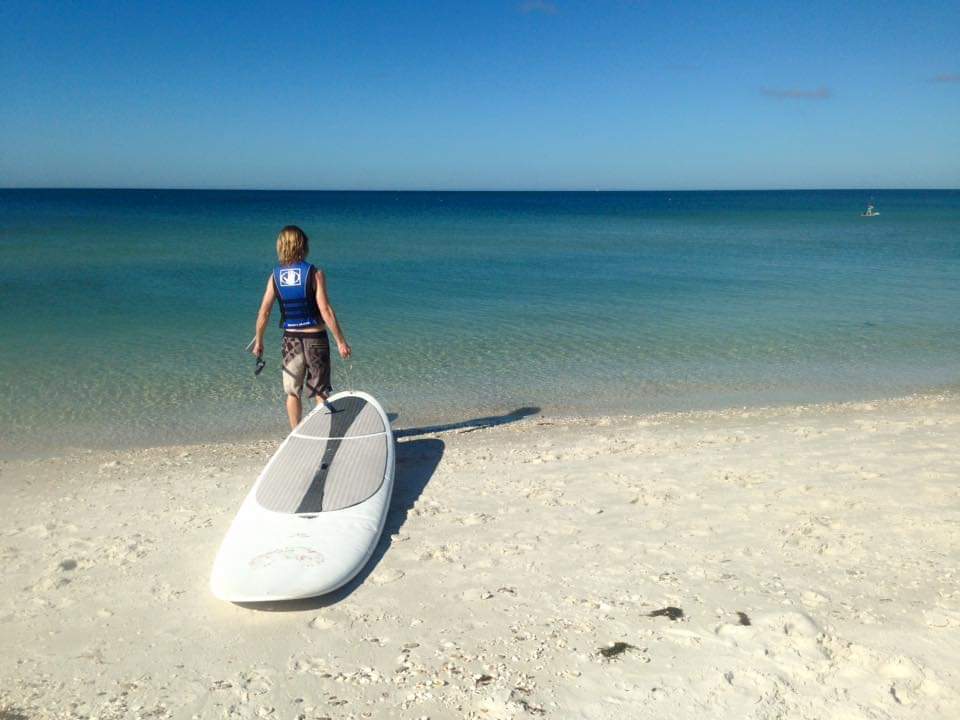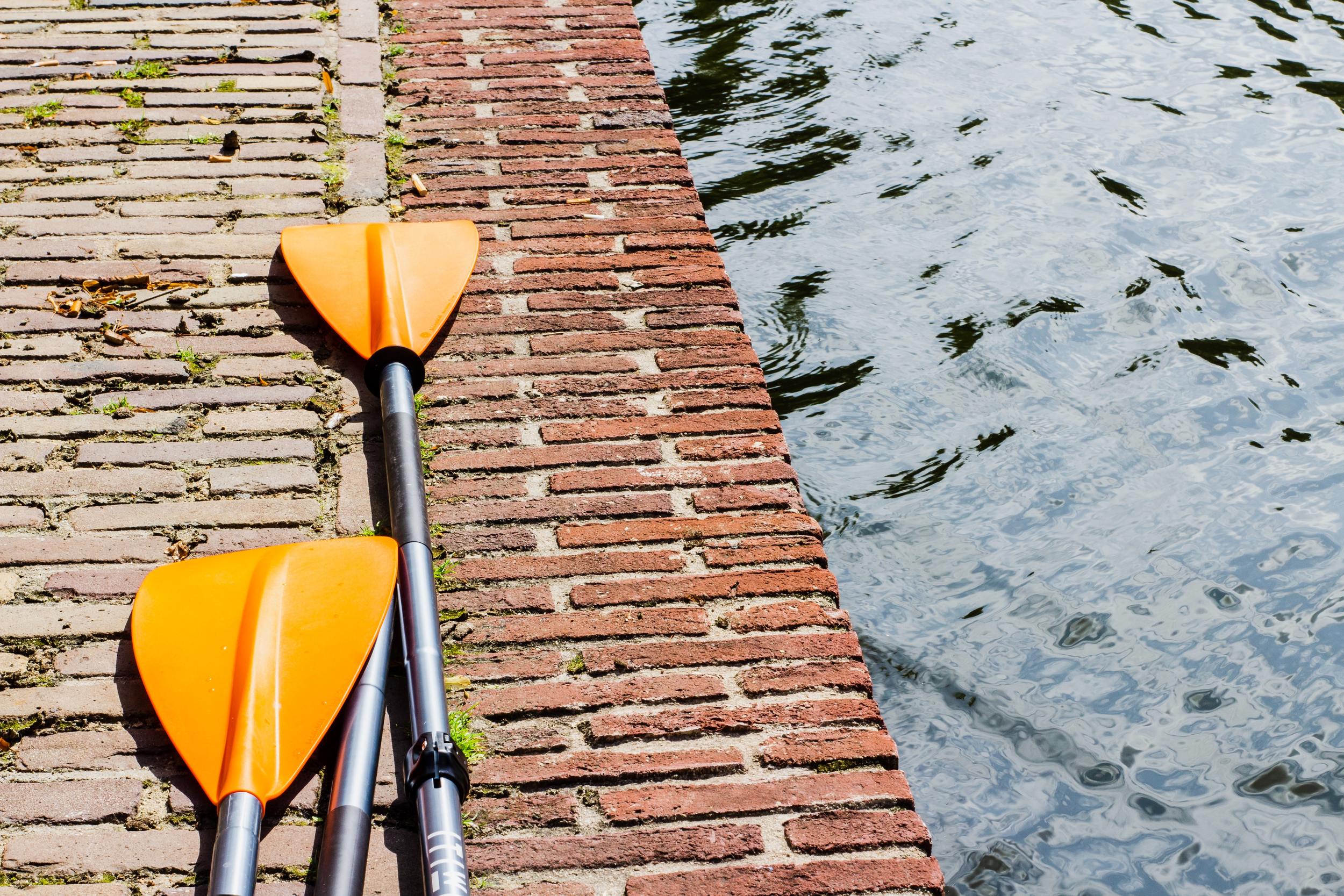How to Choose the Best SUP Board: Guide in Buying SUP Board
If you want to try SUP boarding, you should consider the best SUP board to use. In this article, we help you choose the best SUP board.

SUP stands for Stand-Up Paddleboarding. It is an instrument used to explore water and offers a fun and relaxing experience. SUP needs a minimum gear, so you can easily paddle the ocean surf, lakes, and rivers. It doesn’t need waves to make it work.

For those of you who want to start learning SUP, there are several things you need to consider.
Table of Contents
A. Board
1. SUP Boards Types

There are several types of paddle boards based on the functions:
- All around paddleboards They are the traditional surfboard-style and the most common SUP board to use. This type of board is beginners, family, or dog-friendly and suitable for relaxing and fishing on boards. It can work in any condition, including flat or choppy water.
- Touring SUP’s It has a narrow width to make it more stable. It has a pointed nose or bow at the front end that makes it easier to paddle on a long-distance in flat water such as an open ocean, bays, and lakes. Even though the board is designed to be beginner-friendly, it’s more suitable for serious paddlers who love high-intensity workouts.
- Racing SUP boardIt has high performance designed for water races, competitions, and downwinders. It’s a longer and wider board that has speed and glide efficiency. Beginners shouldn’t use this board since it is harder to control and challenging.
- Fishing SUP Instead of investing in a boat or kayak, fishing SUP is more affordable for those of you who love fishing but has a low budget. This board has a big volume to accommodate your fishing gear and keeps it dry out of water. You can install your equipment, such as a rod holder, fishfinder, and anything you need to optimize your fishing expedition using this type of board.
- Surfing Boards As for the name, Surfing boards are designed for more professional paddlers. Compared to other types of boards, it’s less stable, making it very maneuverable on waves and shreddable.
- Kids’ SUP’s It has a shorter length than the previous types since it made for kids or teenagers. This type of board supposed to used along with smaller paddlers with small shafts and blade as well. The boards usually have 9 feet long and narrow width.
- Family SUP BoardIt is a user-friendly board that’s supposed to used by the family. It’s a longboard with a wide nose and stable squash tail. The boards are also beginner-friendly that even kids can operate it easily.
- Women SUPBoards for women is supposed to be lightweight, easy to carry and remove from other transportation. Sometimes, it’s also smaller and has a narrow midsection.
- Yoga SUP Works in flatwater and is designed specifically for Yoga and fitness related exercise purposes. The board has an expansive deck pad that is wide enough for Yoga.
2. SUP Hull Types
SUP hull is defining the characteristic performance of the board in the water. There are two common types of SUP hull:
- Planing Hull is the most common hull used by paddlers. The bottom of the board is rather edgy, which makes it suitable for casual paddling as well as surfing since the design provides more maneuverability and stability.
- Displacement Hull in the SUP board is suitable for long-distance sailing. It has a sharp-pointed nose that allows the water displaces from one point to the other end and make your board journey faster and smoother.
B. Paddleboard Size

1. Weight and Volume
To choose the proper SUP board, you have to consider its weight and volume, since it will influence comfortability and displacement. Paddleboards’ average weight is 20-30 pounds. SUP board with broader, longer, and thicker dimensions has more volume and weight capacity. The board with more volume is more stable to use on the water.
As a beginner, you might want a stable board that supports more weight so you can choose the board with a larger volume. You can also buy the paddleboard with butterfly grip handle since it’ll help you move your paddleboard easier, instead of the old handles one. As your skill improves, you can decrease the board volume to make it more challenging.
2. Width
Each paddleboard type has different dimensions, you have to choose the paddleboard based on your necessity. Paddleboard width also influencing the stability, and the most common width is 33 inches wide. Based on the width, there are two types of paddleboard that you can choose:
- The wide board is suitable for beginners, the one with recent leg or hip injuries, anyone with a large body, or anyone with poor flexibility. The width of the board usually is 31 inches or wider.
- The narrow board is suitable for you who love to maneuver your board and has weight under 190 lbs. This board also lighter than the wide board and easier to carry. The width of the board usually is 29 to 30 inches.
3. Length
You have to choose the paddleboard that fits with your body size, or it’ll be harder to operate it. You have to consider your car, storage, and length of the walk from your place to water. The longer board you use makes it more difficult to move or carry, especially in bad weather.
For beginners or anyone who wants to relax, it’ll be better if you use 10 to 11.6 feet board. And for you who want to use the paddleboard for touring, racing, or other competitions, you can choose paddleboard with 12.6 or 14 feet long. The longer board gives you more speed than the short one.
C. Materials

Paddleboard made from diverse types of material with different advantages and disadvantages, for example:
- Plastic or sometimes called as rotomolded has a durable exterior, affordable, but heavy. Most rented paddleboards made from this material, and it’s suitable for activities in the rivers with rapid currents.
- Softtop is a board with high-density EVA rails, which makes it user-friendly and allows users to walk to both ends of the board. This board is designed for fun, and anyone can use it easily, even for a dog.
- Fiberglass and Epoxy is the most common material to make a paddleboard. It has a mid-range price and suitable for many types of paddling. It has various weights depends on the construction technique. Producers usually combining fiberglass with other materials to add the feature on the board, such as a sheet of wood which placed under the fiberglass deck makes it more durable and stiff.
- Inflatable materials have great durability, lightweight, and suitable for various types of paddling. Inflatable materials made from PVC with drop-stitch construction, which makes it easy to store in a small place, such as planes or car baggage.
The Difference Between Inflatable and Epoxy SUPs

As the most commonly used board, you might have a hard time choosing between Inflatable and Epoxy SUP. We will differentiate both SUP types that might help you to choose the fittest paddleboard for you:
1. Usage
- Inflatable best suited for first timer and beginners. The inflatable board can be used in any water conditions which makes it the safest option. It’s also easy to transport and doesn’t need much storage space.
- Epoxy board best suited for professional paddled who wants more challenging maneuverability, speed, and glide. This type of board is more durable than the inflatable one, even when you used to take it on many adventuring fields.
2. Transportation
- The inflatable board is the easiest board to transport. It can be deflated, as well as the inflatable paddleboard and rolled up to the size of a sleeping bag, so you can carry it on your backpack.
- Epoxy board is harder to transport since it needs large vehicles and straps to the car.
3. Storage
- The inflatable board can be folded into sleeping bag size, so it doesn’t need a large space for storing.
- Epoxy board isn’t difficult to store despite its large size. You need at least 9 food space for storing your SUP. The board has to stored inside of its bag to avoid scratches or any incidents.
To storing your SUP boards (both inflatable and epoxy), you have to keep it out of direct sunlight since it was damaging your board. The sunlight can de-laminate your epoxy board or bust the seams of your inflatable board.
D. Accessories

There are several types of accessories that will complete your SUP board journey, such as:
1. Paddles
A paddle is a must-have accessory that will allow you to control and stabilize your board. Some SUP board producers didn’t include paddle as a package on their product, so you have to buy it separately, and it cost almost 20% of the board price. But don’t worry, many other sellers also provide a SUP board with a paddle as a package. You just need to check on the product thoroughly.
2. Fins
The fin provides security while you’re on top of the SU board. It keeps your board floating and stable. There are the 4 most common fin types that you can choose:
- Large single fins placed in the finbox on the board. This type of fins are suitable for racing, touring, or flatwater paddling since it has a better track you push the board forward than other types of fin;
- 3-fin setup or thruster is suitable for surfing or tracking on flat water. One of the three fins can be removed, leaving 2 fins called “side bites” and it can still work properly.
- Race Fins has various styles, some come with rigid shaped and others as a traditional flexible surfboard. The rigid fins suitable for downwind trek and placed on a longboard (14 feet or more). The minus point of this fin style is when it has contact with rocks and makes you bouncing off obstruction, but you can still paddling your board.
- Inflatable fins are flexible rubber and placed on a board or semi-rigid fins that can be installed and removed.
E. Price

There are several ranges on the SUP board price that can be established with your budget, that are:
- Basic. The most basic price of the SUP board is under $500. The basic board usually lack in quality, materials, or design. It’s even not quite durable, and once again, basic. But if you want to use it only for playing or relaxing, it’s still worth your penny.
- Premium. The premium SUP board usually comes with a price range of $500 to $1.000. It was made from high-quality materials, has great performance, and artistically designed. The premium board suited for those of you who want to use it for the long term. Investing a bit more money to your SUP board can be guaranteeing its quality and durability.
Those are the points of the SUP board that you should consider before buying it. You can adjust its characteristics to your preferences and necessities.

Are you on Pinterest? Pin these!


